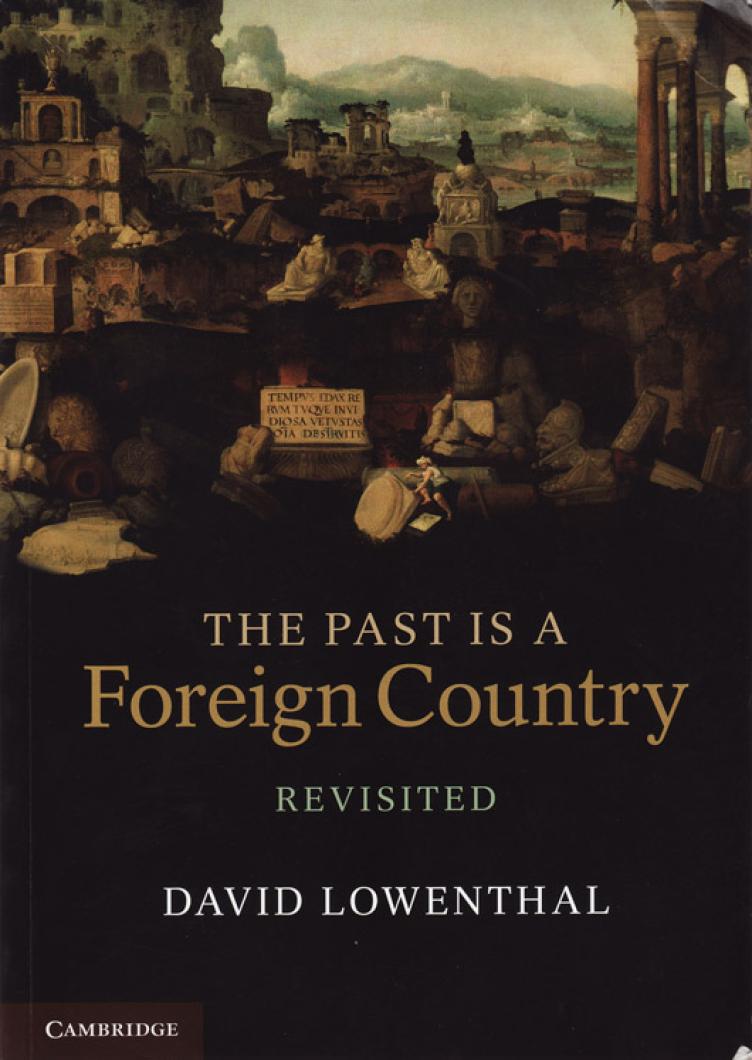The Past Is a Foreign Country — Revisited by David Lowenthal. Cambridge University Press. Illustrated. 660 pages, $29.99 paperback, $99 hardcover.
In 1969, after an absence of some 30 years from the Vineyard, Dr. David Lowenthal (now 93 years old) revisited the Island. At the time Dr. Lowenthal was a research associate and secretary of the American Geographical Society in New York city, and he had summered in childhood in Chilmark.
On that first adult visit nearly a half-century ago, he was pleased that the Island landscape had changed little in comparison with mainland resorts. And he also happily noted that he found the Vineyard and Nantucket “about the only places you can still hold onto the architectural past as it should be.”
Sadly, the proposed demolition of the 1775 Benjamin Lambert Robinson house in Chilmark and the too common “reconstructions” of old Edgartown homes, leaving only a staircase or chimney of the original, might change his mind today.
Dr. Lowenthal talked on his visit of a conference he had attended where they had discussed what the perfect American environment might be. Many felt it would be one where individuals could build exactly what they wanted wherever they wished.
To this he replied: “Of course, that definition of the perfect environment . . . means you miss any real contact with the past. Instead, lacking that, you have a museumization of American history, as at Williamsburg. The past becomes fake because you don’t have it around you in its natural setting, as it is on the Vineyard.”
These decades later, in this book, Dr. Lowenthal continues his concern with the past. He reiterates his contention, first made in his earlier, The Past Is a Foreign Country, published in 1985, that Disney-like nostalgia, “historic” reconstructions, reenactments and commemorative events are often replacing genuine historic sites.
But there is much more than that, of course, both in the 1985 book and in this new, monumental, 660-page, profusely illustrated, exhaustively researched and often highly entertaining volume. Not long after his Vineyard visit, Dr. Lowenthal moved to London to become a professor of geography at University College. He is now professor emeritus there and at the University of California in Berkeley where he spends part of each year. His decades in England have allowed him to weave into the new book a great deal about attitudes in Great Britain toward nostalgia.
Although The Past Is a Foreign Country — Revisited can sometimes overburden a less serious reader because of the enormous amount of material it contains, it can also fascinate with entertaining nuggets. As he elaborates on the importance of nostalgia to all people, he writes of how, in wartime, homesickness has threatened to decimate armies. In the American Civil War, troops on both sides were forbidden to play John Howard Payne’s Home Sweet Home for fear it might lead to desertion. In World War II, the American Surgeon General expressed his fear that homesickness in the military “might spread with the speed of an epidemic.”
Attachment to the past is inescapable, Dr. Lowenthal insists. It is often an attachment to childhood. “The past makes the present recognizable. . . without past experience, no sight or sound would be recognizable.” It is also, he concludes, being separated less and less from the present in this high-digital world. It is somehow being ”folded” into the present. When the past is endangered, there are inevitably efforts to preserve it, he writes. In Britain, after the Industrial Revolution, there was a longing for old rural ways and landscapes. A Society for the Preservation of Ancient Buildings was founded to save those remaining.
In the United States in 1960, preservation of historic structures was still a hobby of only the elite, but by 1980 preservation had become important to many Americans, and more than half of American construction then involved rehabilitation of old buildings.
Today Great Britain protects half a million historic structures, including toll booths and telephone kiosks. UNESCO has been designating more and more World Heritage Sites. The textile mills of New England have also become historic sites.
The Past Is a Foreign Country — Revisited is a demanding book, but there is much to lead the thoughtful, curious reader deep into it. Vineyard readers concerned with preservation of the Island’s past should be particularly interested.
Clearly, however, this isn’t a volume for summer beach reading (it’s too hefty to carry, among other reasons), but it could be turned to with interest before a blazing fire during a northeast storm.





Comments
Comment policy »